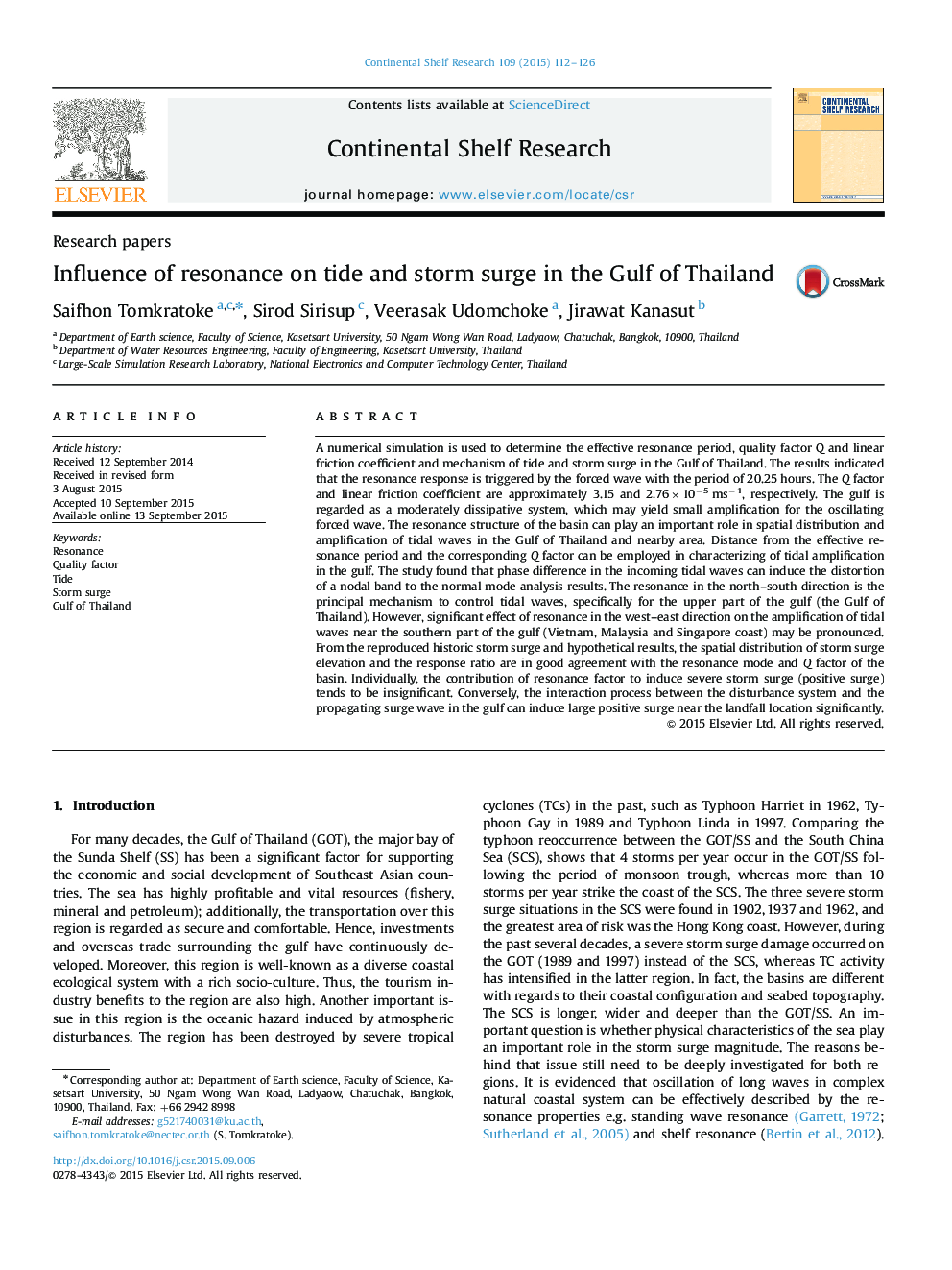| Article ID | Journal | Published Year | Pages | File Type |
|---|---|---|---|---|
| 6383052 | Continental Shelf Research | 2015 | 15 Pages |
Abstract
A numerical simulation is used to determine the effective resonance period, quality factor Q and linear friction coefficient and mechanism of tide and storm surge in the Gulf of Thailand. The results indicated that the resonance response is triggered by the forced wave with the period of 20.25 hours. The Q factor and linear friction coefficient are approximately 3.15 and 2.76Ã10â5Â msâ1, respectively. The gulf is regarded as a moderately dissipative system, which may yield small amplification for the oscillating forced wave. The resonance structure of the basin can play an important role in spatial distribution and amplification of tidal waves in the Gulf of Thailand and nearby area. Distance from the effective resonance period and the corresponding Q factor can be employed in characterizing of tidal amplification in the gulf. The study found that phase difference in the incoming tidal waves can induce the distortion of a nodal band to the normal mode analysis results. The resonance in the north-south direction is the principal mechanism to control tidal waves, specifically for the upper part of the gulf (the Gulf of Thailand). However, significant effect of resonance in the west-east direction on the amplification of tidal waves near the southern part of the gulf (Vietnam, Malaysia and Singapore coast) may be pronounced. From the reproduced historic storm surge and hypothetical results, the spatial distribution of storm surge elevation and the response ratio are in good agreement with the resonance mode and Q factor of the basin. Individually, the contribution of resonance factor to induce severe storm surge (positive surge) tends to be insignificant. Conversely, the interaction process between the disturbance system and the propagating surge wave in the gulf can induce large positive surge near the landfall location significantly.
Related Topics
Physical Sciences and Engineering
Earth and Planetary Sciences
Geology
Authors
Saifhon Tomkratoke, Sirod Sirisup, Veerasak Udomchoke, Jirawat Kanasut,
